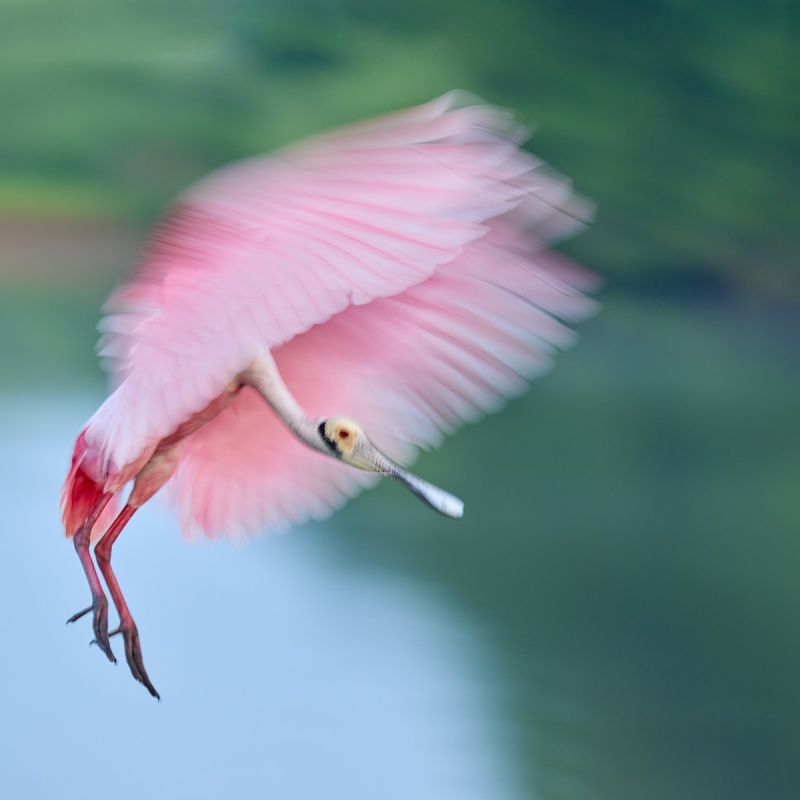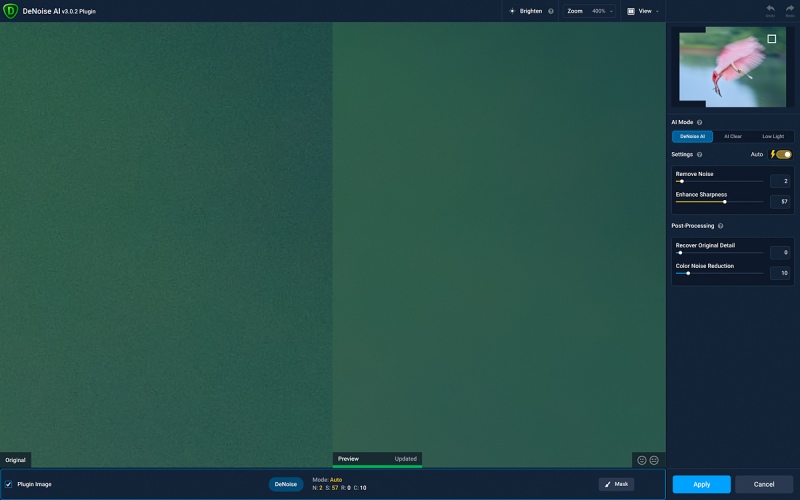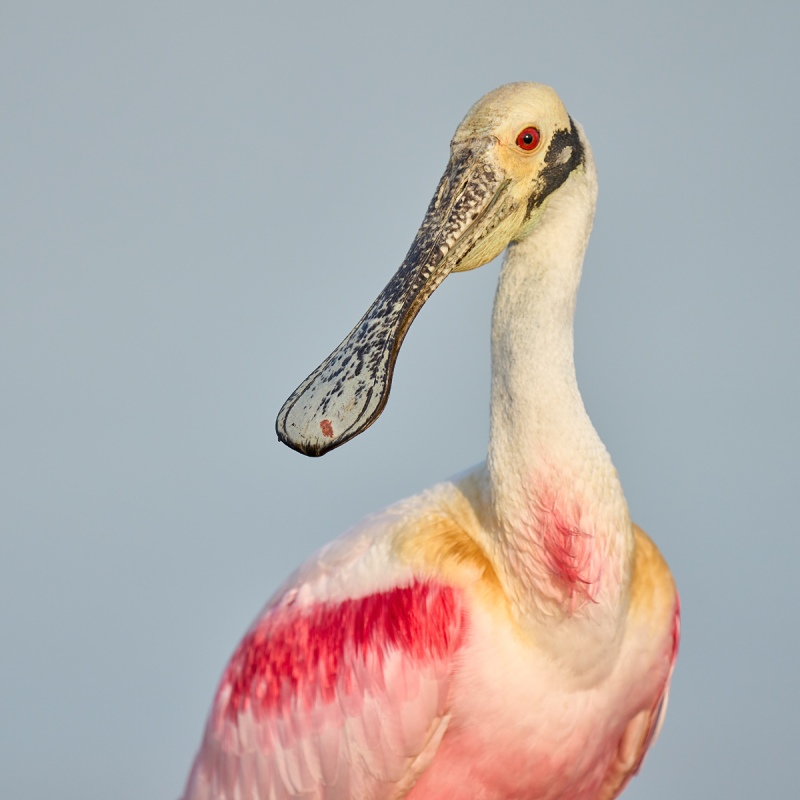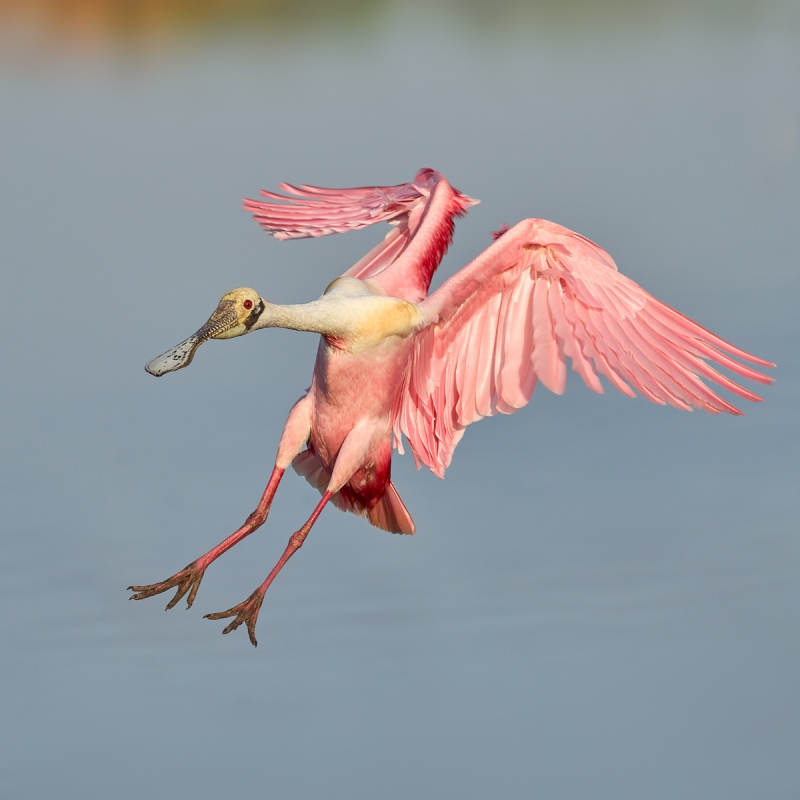If …
If you feel strongly either way about any of today’s three featured square crops, please leave a comment letting us know how you feel and why.
What’s Up?
Rajat Kapoor from Kentucky, vacationing in Florida with his wife and younger son, joined me at Stick Marsh for an In-the-Field session on Friday. The forecast had been for northeast winds at about 10mph. Instead, a cold front had roared through overnight and we were greeted by 20mph northwest winds with gusts to 30. With clear skies. As I write here often, strong northwest winds on sunny morning are death on bird photography. It was brutal. I was glad that I had my parka and gloves in the car. We started with some nice pre-dawn palm tree silhouettes. Then, exactly zero spoonbills flew into the usual hotspot. We had about one hundred Cattle Egrets roosting on the North Rookery island. We did some wide stuff and talked a lot about exposure. After that, we got down on our butts at one point and got some nice head shots of Black Vultures with blue water backgrounds (and talked a lot about exposure). After that we moved around a lot without much success. We did have some flyby spoonies and Great Egrets (and talked a lot about exposure).
Rajat was amazingly nice and amazingly understanding. I am hoping that he can make it here early on Monday for a free make-up session with the crane chicks.
Here is what he had to say about our morning (via unsolicited e-mail):
Hi Artie, Thank you so much for taking the time today. I really enjoyed my time with you this morning and definitely learned so much. You were generous and helpful in offering me valuable advice. I could truly see your remarkable passion in spreading your vast knowledge so that everyone of us can benefit. I witnessed it personally today when I noticed you interacting with people you may not even know, but wanted to help them unselfishly to improve their skills. I also want to thank you for extending me the offer to come and join you for a session to photograph the Sandhill Crane chicks. As you know, our schedule is quite hectic — my son really wants to go see the Kennedy Space Center). I cannot promise for Saturday or Sunday, but Monday morning could be possible.
I really would love it too, if my wife and son could meet you as well. best regards Rajat.
The wind was strong from the northeast at 7pm last night, perfect for sunset silhouette photography. But I was so busy working on the webinar for the South Shore Camera Club that I totally missed sunset and headed to bed early.
Today is Saturday 3 April 2021. The forecast for ILE this morning is for partly cloudy with 10mph north winds. I will be headed down to the lake fairly early as it is generally calm for a while right around sunrise. Wherever you are and whatever you are doing, I hope that you have a great day.
This blog post took almost two hours to prepare and makes 102 consecutive days with a new one. Please remember to use my B&H affiliate links or to save money at Bedfords by using the BIRDSASART discount code at checkout. Doing either often earns you free guides or discounts. And doing so often earns my great appreciation.
|
|
|
This image was created on 30 March 2021 at Stick Marsh, Fellsmere, FL. I used the hand held Sony FE 200-600mm f/5.6-6.3 G OSS lens (at 344mm) and The One, the Sony Alpha 1 Mirrorless digital camera. Auto ISO set 640. Exposure determined by Zebras with Exposure Compensation on the Thumb Dial. Multi-metering +2.3 stops: 1/40 sec. at f/6.3 (wide open) in Shutter Priority (S) mode. AWB at 7:31am with clouds on the eastern horizon. Wide/AF-C was active at the moment of exposure and performed perfectly. Image #1: Roseate Spoonbill SQUARE landing blur |
Three Squares a Day
As I have been doing intermittent fasting for the past two years, I eat only two meals a day. But three squares on a single day of photography has got to be a good thing! I am not sure why I have suddenly acquired a taste for 1:1 crops, but I think that the perfectly square crops work well with all three of today’s featured images. With this pleasing (for me at least) blur, the square crop was necessitated by my failure to pan fast enough to keep the bird back (to our left) in the frame.
Does this image need the face and eye to be sharp to be a success?
|
|
|
Click on the image to see the amazing job of noise reduction in the after image on our right. Image #1A: Topaz DeNoise AI on the Roseate Spoonbill SQUARE landing blur image |
Topaz DeNoise AI Rocks
Note the placement of the navigator box on the darkest mangroves in the upper right corner of the frame and the 400% Zoom (magnification). And be sure to click on the screen capture to see the amazing job of noise reduction in the after image on our right. With the last update, Topaz DeNoise AI got a lot faster. That is a big plus as I run it on almost every image I process as the first step in my workflow (immediately after bringing the converted TIF into Photoshop). If needed, I will execute a Delete Cropped Pixels crop before running DeNoise so that the program does not have to work quite as hard (or as long).
Great Topaz News!
Folks who use the BAA Topaz link to purchase Sharpen AI, DeNoise AI, or the Utility Bundle (or any other Topaz plug-ins), will receive a 15% discount by entering the ARTHUR15 code at checkout. If the stuff is on sale (as it usually is), you save 15% off of the sale price! To get the discount you must use my link and you must enter the discount code. Be sure to start with this link.
Those who purchase Sharpen AI, DeNoise AI, or any other Topaz plug-ins using my link and then entering the ARTHUR15 code at checkout can e-mail to request a short Getting Started with Topaz e-Guide. Please include a copy of your Topaz receipt that shows the discount. Aside from the basics, the guide explains how to install the plug-ins so that they appear in the Photoshop Filter Menu.
|
|
|
This image was created on 30 March 2021 at Stick Marsh, Fellsmere, FL. I used the hand held Sony FE 200-600mm f/5.6-6.3 G OSS lens (at 600mm) and The One, the Sony Alpha 1 Mirrorless digital camera. ISO 800. Exposure determined with ISO on the Thumb Wheel. 1/1000 sec. at f/6.3 (wide open) in Manual mode. AWB at 8:26am on a then clear morning. Wide/AF-C was active at the moment of exposure and did not do such good (again quoting my late-Dad). Image #2: Roseate Spoonbill SQUARE portrait |
Depth of Field …
Like the Canon R5, there are times when the a1 fails to detect and track a very obvious to us bird’s eye. The AF system was convinced that the distal end of the bill was the spoonies eye. And would not let go even when I bumped the focus. I should have switched to ZONE AF and moved it to the upper right. But I did not want to lose the pose so I pushed the shutter button. Topaz Sharpen AI (surprisingly on Focus), did a nice job of sharpening the bird’s face and eye.
By comparing the EXIF for this image with the EXIF in Image #3, you will see that I properly reduced the shutter speed by half to save one full stop of ISO. As I was seated using the knee-pod technique (and thus quite stable), setting 1/500 sec. at f/9 would have been a better choice (especially if I had known that the AF problem would arise). Do understand, again, as with the Canon R5, that the a1’s eye-tracking AF is consistently amazing (though not 100% perfect).
Image Question
Would you have removed the liver spot (???) near the end of the bill? Why or why not?
|
|
|
This image was created on 30 March 2021 at Stick Marsh, Fellsmere, FL. I used the hand held Sony FE 200-600mm f/5.6-6.3 G OSS lens (at 243mm) and The One, the Sony Alpha 1 Mirrorless digital camera. ISO 640. Exposure determined with ISO on the Thumb Wheel. 1/2000 sec. at f/5.6 (wide open) in Manual mode. AWB at 8:30am on a then very slightly cloudy morning. Wide/AF-C was active at the moment of exposure and performed perfectly. Image #3: Roseate Spoonbill SQUARE braking to land orchestra conductor pose |
200-600 G Lens Versatility
Note that with Image #3 I had zoomed out to 243mm. In retrospect, zooming out to 200mm would have been an even better choice. Compare that with 600mm focal length that worked perfectly for Image #2. I felt bad for Rajat that it was too cold and windy for the spoonbills to fly in to grab some sticks for the nest. The weather, however, is looking excellent for my two Stick Marsh days (this coming Tuesday and Wednesday) with the M&M boys. — Morris Herstein and Mike Gotthelf, both multiple IPT veterans. I am hoping that Rajat can make it here early on Monday.
The Stick Marsh Site Guide Subscription Service
The Site Guide Subscription Service is a new concept. I e-mailed the first issue last week: Stick Marsh Site Guide e-Mail #1: The Basics. The Basics e-mail includes specific directions to the site, and a map of the rookery area with specific instructions and wind, weather, and where-to-be advice. I e-mailed the second installment yesterday. In it, I shared several new shooting locations and strategies. I will be sending e-mail #3 this afternoon or tomorrow at the latest.
To sign up for the Stick Marsh Site Guide Subscription Service, call Jim in the office weekday afternoons at 863-692-0906 with your credit card in hand or send a PayPal for the $100.00 to us at birdsasart@verizon.net. Please be sure to include the words Stick Marsh with your Paypal. At some point, we will get this item in the BAA Online Store.
I fully understand that you can go to Google Maps, find the Stick Marsh, visit, and likely make some good or great images. You might think, I can do fine just without artie’s advice. But you will do a whole lot better with it.
Typos
With all blog posts, feel free to e-mail or to leave a comment regarding any typos or errors.


















Art: Difficult choice but I am going with #3 because it’s an unusual shot. I would have chosen #1 but didn’t because the eye wasn’t sharp.
Hi, Artie. Wonderful images all. I agree with others about the first one (the blur). I like it but if the head were sharp it would be an instant prizewinner, just wow. I like the third image best, and got a chuckle out of the orchestra conductor pose. I’d have to see it cropped as a rectangle to know which I’d prefer, but for sure looking at it I didn’t feel the need for a rectangle. I like the square crop.
All three images are great and work for me. However, if I were to pick one it would be #2. The head angle and expression says to me that the bird is curious and wonders what you are up to. Not sure about the liver spot on the bill. It is a part of the bird and its character, and with the bright pink on the near wing and the similarly shaped pink patch on the lower neck, it forms a triangle that is mimicked by another triangle with the eye, liver spot and pink lower neck spot; a sort of balanced symmetry.
Hey Dane, Thanks for your thoughtful comments!
with love, a
I’d leave the liver spot. I love all the grit, stuck-on vegetation, marks, battle wounds, etc. To me, photographing wildlife is not like H.S. senior portrait day.
My instant thought on seeing #1 was “drop dead gorgeous” for the color, wings way overhead enclosing the bird, and the wing blur. But I do like to have the eye sharp in a blur. Not sure about taking away the liver spot in #2. And in #3, if it was possible I’d like a rectangle to give the bird more room to land, and with the landing spot or some other vegetation showing
My favourite is #2
I like the pose and the beautiful pastel colours of the bird!
Number 1 image
Wow…..
Plus 2.3 stops?
1/40th of a second????
I’m impressed you got what you did at what looks like close range.
Farther away would have been “easier”.
Funny that the back leg looks pretty sharp and the front leg is ‘acceptable’ but the head and bill are ‘soft’. Must be the panning.
Don’t fret— blue wing teal in flight have been making this 70 year old feel slow and Ihad a lot more light than you had LOL
While I would normally prefer a sharp eye and bill…….Wing blur and color works…no wonder you kept it
I usually abhor blurs but I like this one LOL
I also love the first image, but would prefer a sharp eye and bill. Would that even have been possible? If so, what could you have done to get that result? Thanks.
Good question, Carol. At times, when creating blurs of flying birds at shutter speeds between 1/30 and 1/125 second (or even 1/15 second), it is possible to get the face and eye sharp or even very sharp on the eye if you pan smoothly and your panning rate exactly matches the speed of the bird in flight and if the birds head is not moving up or down. In other words, it ain’t easy.
with love, a
ps: there are, of course, Photoshop options …
Thanks for the explanation.
YAW. And stay tuned for the ps/PS option.
with love, a
I like the first image because it is a different composition than what you normally see. The blur in the wings and the overall composition and color in the image work for me. I prefer a sharper eye and bill but this small amount of blur works in this image. I prefer a different crop than the square. Have a great day and thanks for posting and getting me to think about crop factors in my images.
Normally I don’t like blurred images but your 1st photo is stunning.
I would leave the liver spot – it makes the photo more realistic.
I love blur, Artie, but not when the eye and bill are fuzzy. Stunning detail in number two. Number three is my favourite, though I’d prefer landscape instead of square. The colours in all three images are beautiful.
Thanks for leaving a comment, Margaret.
with love, a